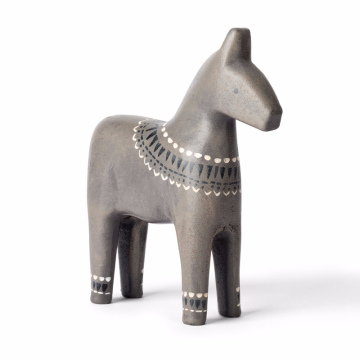The Prelude to Colonization: Spain's Motivations and Expeditions
In the late 15th century, Spain emerged as a formidable power deeply motivated by economic, political, and religious factors that propelled its expeditions to the New World. The Spanish crown, under the auspices of King Ferdinand and Queen Isabella, sought to expand its influence and territory beyond Europe. The quest for new trade routes was paramount; access to the lucrative spice trade in Asia presented a tantalizing opportunity. However, the overland routes to Asia were fraught with risk and dominated by rival powers; thus, the Spanish aimed to establish maritime paths that would enhance their trade capabilities.
Economic ambitions were further intensified by a relentless pursuit of gold and silver. The promise of vast riches drove many explorers into uncharted territories, with the potential for wealth significant enough to enrich the Spanish monarchy and fund its military endeavors in Europe. The first expedition, led by Christopher Columbus in 1492, marked a critical juncture in this pursuit. Columbus's voyages, guided by a belief that he could reach Asia by sailing west, instead brought him to the Caribbean. His successful claims of newfound territories invigorated Spanish interest in colonization, leading to a series of additional expeditions.
Political motivations were equally compelling. The unification of Spain under Ferdinand and Isabella created a nation eager to assert itself on the global stage. The desire to expand territorial holdings not only drove Spain's ambitions but also sought to counterbalance the growing influences of other European powers. Furthermore, the Spanish crown was motivated by religious zeal, with the intent to spread Christianity across these newly encountered lands. The desire to convert indigenous populations into devoted subjects of the Church was instrumental to Spain's overarching colonization strategy. This mix of economic gain, political supremacy, and religious ambition fueled Spain's early excursions into the New World, setting the stage for profound historical consequences.
The Mechanics of Colonization: Establishing Control Over the New Territories
Spain's control over its newly acquired territories in the New World was facilitated through a well-structured and systematic approach to colonization. Central to this effort was the encomienda system, which granted Spanish colonists the right to extract labor and tribute from indigenous populations in exchange for protection and Christianization. This system, while intended to civilize and educate native peoples, often resulted in severe exploitation and a devastating decline in indigenous populations due to harsh labor conditions and diseases introduced by the Europeans.
In tandem with the encomienda system, Spain established a complex governance structure to maintain order and enforce colonial policies. Viceroyalties were instituted, each governed by a viceroy who acted as the king's representative. This hierarchical system allowed for effective administration and military oversight of vast territories, aiding in the consolidation of Spanish authority. Additionally, councils known as Cabildos functioned at local levels, with elected officials managing community affairs, which often included native representation—albeit limited—in a bid to integrate indigenous populations into the colonial framework.
Moreover, the integration of indigenous populations into the colonial framework was not solely a matter of governance but also involved significant infrastructure development. Spain invested heavily in mining operations, particularly in areas rich in resources like silver and gold. These mining activities became cornerstones of the Spanish imperial economy, generating enormous wealth. Furthermore, agricultural plantations were established, focusing on cash crops such as sugar, tobacco, and later, coffee. The reliance on indigenous labor and, increasingly, enslaved Africans in these plantations reflected the economic priorities of the colonial system.
Through these various mechanisms—encomienda systems, governance structures, and infrastructure development—Spain solidified its control over the New World, ensuring that its imperial ambitions translated into economic gain and a lasting cultural impact that reshaped the region.
Cultural Exchanges and Conflicts: The Interactions Between Spanish Colonizers and Indigenous Peoples
The period of Spanish colonization in the New World was marked by complex interactions between the Spanish settlers and the indigenous populations. These encounters facilitated significant cultural exchanges, while also leading to notable conflicts. From the outset, the Spanish sought to spread their language, Christianity, and agricultural practices among the natives. The introduction of Spanish as a dominant language along with the imposition of Catholicism dramatically transformed the cultural landscape of the Americas. The establishment of missions became a key strategy for the Spanish to convert indigenous communities, leading to both adaptation and resistance among native peoples.
In addition to language and religion, the Spanish brought new agricultural techniques and crops. The exchange of crops, known as the Columbian Exchange, included the introduction of wheat, sugar, and livestock to indigenous diets, while indigenous staples such as maize and potatoes found their way to Europe. Such interactions led to a profound alteration of lifestyles and economies, showcasing a shared, albeit unequal, cultural adaptation.
Legacy of Colonization: The Lasting Impact on Modern Spain and the New World
The Spanish colonization of the New World had profound and far-reaching effects, shaping the socio-economic, cultural, and political landscapes of both the colonizers and the colonized. In essence, the legacy of this era is interwoven with the contemporary identities of nations across Latin America and Spain. Economically, the influx of wealth from the colonies, primarily through the extraction of precious metals, transformed Spain into one of the foremost powers in Europe during the 16th and 17th centuries. However, this wealth also led to economic dependency and inflation, challenges that initiated long-term effects on the Spanish economy, the ramifications of which are still evident today.
Culturally, the colonization resulted in a complex tapestry of influences that have shaped the national identities of many nations in Latin America. The intermingling of Spanish traditions with indigenous customs and African influences gave rise to unique cultures characterized by diverse languages, religious practices, and artistic expressions. For instance, the blending of these cultures is prominently visible in the regions' music, cuisine, and festivals, which continue to celebrate this hybrid heritage. Furthermore, the legacy of colonization persists in various social dynamics, including issues of race and class that stemmed from the colonial caste systems instituted by the Spanish.
Politically, the colonial legacy is manifest in the governance structures of former Spanish colonies, many of which were influenced by Spanish administrative practices. The challenges of establishing stable governments post-independence are often rooted in this colonial experience, with many nations grappling with political instability, corruption, and the uneven distribution of power. This speaks to the broader discussions of colonial legacy, as nations strive to reconcile their historical narratives while forging identities that honor both their indigenous roots and colonial pasts. Ultimately, the ongoing dialogue regarding colonialism and post-colonial identities continues to evolve, reflecting the struggles and aspirations of societies striving for equity and recognition in a contemporary context.








